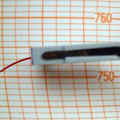New data logger and graphs
 Not long ago, tracing a dynamic graph with the values of a Yoctopuce sensor required you to have a database to store the history. Indeed, retrieving the data from the data logger was clearly too slow for an interactive application. It so happens that the data logger component of Yoctopuce products has been greatly improved, at both the API and firmware levels. Retrieving data from the data logger is now done in a flash. Demo with a C# example.
Not long ago, tracing a dynamic graph with the values of a Yoctopuce sensor required you to have a database to store the history. Indeed, retrieving the data from the data logger was clearly too slow for an interactive application. It so happens that the data logger component of Yoctopuce products has been greatly improved, at both the API and firmware levels. Retrieving data from the data logger is now done in a flash. Demo with a C# example.
| 4 comments | Read more... |
Using HTTP Callback with Java
 Until now, it was possible to use the standard Java library to access a YoctoHub or a VirtualHub, but one working mode was missing: the HTTP callback mode. This mode, previously available for PHP and Nodes.js only, is now available in the beta version of the Java API (v1.10). Let's show how to write a Java Servlet that can interact with a Yocto-Hub.
Until now, it was possible to use the standard Java library to access a YoctoHub or a VirtualHub, but one working mode was missing: the HTTP callback mode. This mode, previously available for PHP and Nodes.js only, is now available in the beta version of the Java API (v1.10). Let's show how to write a Java Servlet that can interact with a Yocto-Hub.
| No comment yet | Read more... |
Weather station: display
![]() Last week, we built a solar weather station which posts its data on xyvely. It's convenient, but it would be simpler to be able to consult the data without having to turn on a computer. This week, we tell you how to show this data on a Yoctopuce display. This requires some programming, but nothing too complex. If you wish, we can do this together...
Last week, we built a solar weather station which posts its data on xyvely. It's convenient, but it would be simpler to be able to consult the data without having to turn on a computer. This week, we tell you how to show this data on a Yoctopuce display. This requires some programming, but nothing too complex. If you wish, we can do this together...
| No comment yet | Read more... |
Yoctopuce now supports Node.js
 Good news for Node.js users: we are introducing today a new version of our library, dedicated to this environment. Node.js is an easy-to-install environment that provides an interesting alternative to PHP, and known to be more efficient. You can now use it to drive your Yoctopuce devices as well, including in HTTP Callback mode.
Good news for Node.js users: we are introducing today a new version of our library, dedicated to this environment. Node.js is an easy-to-install environment that provides an interesting alternative to PHP, and known to be more efficient. You can now use it to drive your Yoctopuce devices as well, including in HTTP Callback mode.
| No comment yet | Read more... |
Switching a relay via an SMS
 We have been recently asked whether we had a solution to communicate with our modules using SMS. We have a long term plan for a GSM version of our YoctoHub, but for now we focus on the YoctoHub-Wifi and other new modules. However, using an Android phone and with some programming, it is quite possible to communicate with a Yoctopuce module via SMS. A classic use is to remotely turn on and off the heating of your vacation home.
We have been recently asked whether we had a solution to communicate with our modules using SMS. We have a long term plan for a GSM version of our YoctoHub, but for now we focus on the YoctoHub-Wifi and other new modules. However, using an Android phone and with some programming, it is quite possible to communicate with a Yoctopuce module via SMS. A classic use is to remotely turn on and off the heating of your vacation home.
| No comment yet | Read more... |


